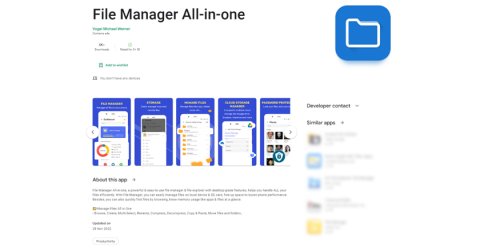
In 2022, Kaspersky experts discovered nearly 200,000 new mobile banking Trojans, marking a two-fold increase from the previous year’s figures. This alarming surge in the number of mobile banking Trojans is also the highest ever reported in the last six years. These and other findings are in Kaspersky’s ‘Mobile Threats in 2022’ report.
With the evolution of mobile services and technologies, mobile threats are becoming increasingly prevalent. To address this growing concern, Kaspersky experts continuously monitor the mobile threat landscape, track threat trends, and keep users and the cybersecurity community informed about potential dangers. In 2022, Kaspersky products detected 1,661,743 malware or unwanted software installers.
One of the most prevalent and concerning mobile threats is mobile banking Trojans, which are used to hunt for data related to online banking and e-payment systems. Kaspersky detected 196,476 mobile banking Trojan installers in 2022, twice more than in 2021, and the highest figure in the past six years. This underscores that cybercriminals are targeting mobile users and are increasingly more interested in stealing financial data and actively investing in the creation of new malware, which may lead to major losses for their targets.
Cybercriminals often spread Trojan banker malware through both official and unofficial app stores. Google Play still contains downloaders for banking Trojan families, such as Sharkbot, Anatsa/Teaban, Octo/Coper, and Xenomorph, all disguised as utilities. For example, the Sharkbot actively distributed downloaders mimicking a file manager that can request permission to install further packages necessary for the Trojan to function on the user’s device, putting the user’s security at risk.
The Sharkbot banking Trojan downloader in a popular app store
“Despite the decline in overall malware installers, the continued growth of mobile banking Trojans is a clear indication that cybercriminals are focusing on financial gain. As our lives increasingly revolve around mobile devices, it’s more important than ever for users to remain vigilant against mobile threats and take the necessary steps to protect themselves”, comments Tatyana Shishkova, security expert at Kaspersky.
Read the full report looking into mobile threats in 2022 on Securelist.
To protect yourself from mobile threats, Kaspersky shares the following recommendations:
- It is safer to download your apps only from official stores like Apple App Store, Google Play or Amazon Appstore. Apps from these markets are not 100 percent failsafe, but at least they get checked by shop representatives and there is some filtration system — not every app can get onto these stores.
- Check the permissions of apps that you use and think carefully before permitting an app, especially when it comes to high-risk permissions such as Accessibility Services.
- A reliable security solution can help you to detect malicious apps and adware before they start behaving badly on your device. Conveniently, you can get protection, like Kaspersky consumer products, directly from mobile operators.
- iPhone users have some privacy controls provided by Apple, and users can block app access to photos, contacts and GPS features if they think these permissions are unnecessary.
- A good piece of advice is to update your operating system and important apps as updates become available. Many safety issues can be solved by installing updated versions of software.
- Kaspersky calls on the mobile industry to enhance cyber protection at all levels, including security for users, by providing tailored cybersecurity services. Kaspersky Consumer Business Alliances enable companies to offer their customers complete cybersecurity portfolios by backing them with Kaspersky’s global support and expertise.





